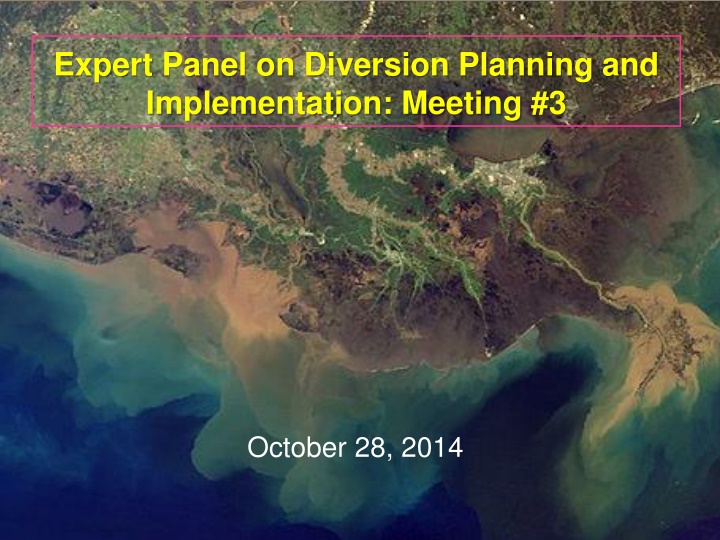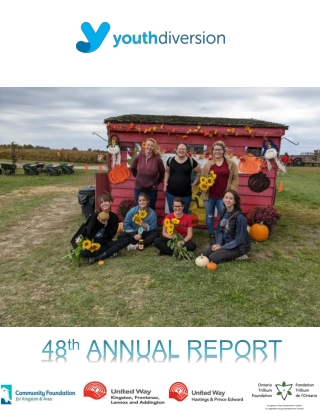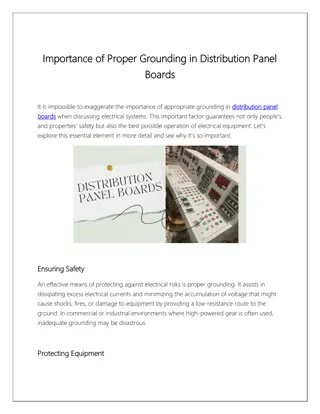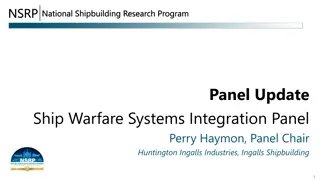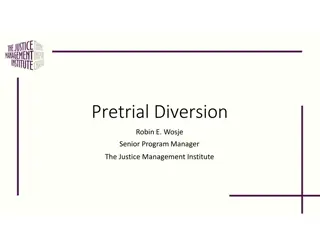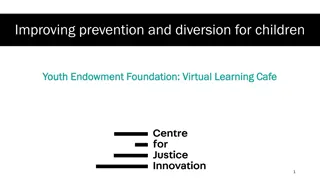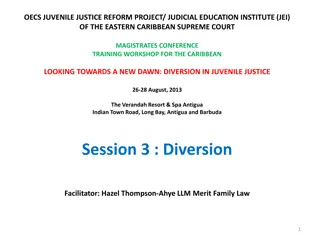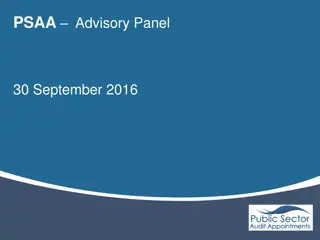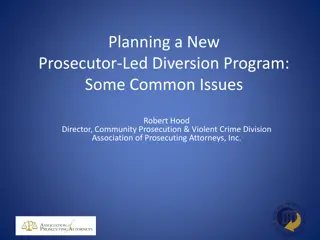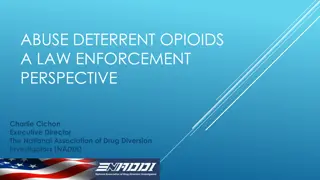Expert Panel on Diversion Planning and Implementation Meeting Report
A detailed overview of the Expert Panel on Diversion Planning and Implementation Meeting including its purpose, composition, authority, and focus on providing technical advice for freshwater and sediment diversion projects, particularly in the Mississippi River and Louisiana restoration efforts. The Panel emphasizes advising on science and research needs related to implementing sediment diversion projects outlined in the 2012 Comprehensive Master Plan. The report highlights key discussions, recommendations, and future meeting plans.
Download Presentation

Please find below an Image/Link to download the presentation.
The content on the website is provided AS IS for your information and personal use only. It may not be sold, licensed, or shared on other websites without obtaining consent from the author.If you encounter any issues during the download, it is possible that the publisher has removed the file from their server.
You are allowed to download the files provided on this website for personal or commercial use, subject to the condition that they are used lawfully. All files are the property of their respective owners.
The content on the website is provided AS IS for your information and personal use only. It may not be sold, licensed, or shared on other websites without obtaining consent from the author.
E N D
Presentation Transcript
Expert Panel on Diversion Planning and Implementation: Meeting #3 October 28, 2014
Formed to provide technical advice on planning and implementation of freshwater and sediment diversion projects Expertise encompasses the natural and social sciences as well as engineering Experience with Mississippi River and Louisiana restoration (or other large restoration projects) Expected to meet up to three times per year over next three years
Why are there no Panel members from Louisiana? Experts from Louisiana are in fact currently engaged and leading much of the work The Panel was established to review and advise the CPRA and the teams that are engaged in these efforts What authority does the Panel have? We are not a decision-making panel We will provide expert advice and recommendations for consideration Is the Panel reviewing the decisions made in the Master Plan? No, the Panel is advising on science and research needs related to advancing and further developing/designing sediment diversion projects that were in the 2012 Comprehensive Master Plan
Panel meeting was held April 29-May 1, 2014 in New Orleans (Day 1 field trip; public session at UNO) Background presentations from CPRA, USACE, and The Water Institute of the Gulf Focus on Mississippi River Hydrodynamic and Delta Management Study and on status of Mid-Barataria Sediment Diversion Special panel discussion on project-specific analyses for large-scale diversions Public comment period
Built on the 18 recommendations from Report #1 Focused on four broad areas 1) Conceptual model of diversion outcomes and management endpoints 2) Hydrodynamic modeling and data collection to optimize diversion operations 3) Modeling ecological effects of diversions to further assess risk and uncertainty 4) Short- and long-term needs and considerations in social science analysis A total of seven recommendations with three timeframes for implementation: Fall 2014 Panel Meeting; 12-18 months; and, 2-3 years
Broad Takeaway Messages 2012 Master Plan is cornerstone for restoration project planning but does not provide details on implementation and approach for planning diversions. Data collection and modeling in Mississippi River comprehensive, and excellent analysis in West Bay; next step should be to evaluate impacts of diversion openings under various operation strategies. Successful application of ecosystem models requires assessing risks, using multiple models, linking to physical and social models, conducting monitoring, making appropriate model selections, and conducting marsh experiments. Social science research and analysis is inadequate, and accordingly there is a need to quickly make progress on identifying roles for social science and analysis in planning for diversions.
Recommendations Timeframe for Implementation Fall 2014 Panel Meeting 1. Articulate an expanded view of the technical approach in planning for diversions. 2. Focus data collection and hydrodynamic modeling on optimizing diversion operation. 3. Provide presentations of ongoing ecosystems modeling efforts. 4. Develop a review process to examine adequacy of monitoring data. 5. Conduct whole-marsh experiment to understand impacts of combined effects of erosion, nutrients, and salinity. 6. Develop a process to identify conflicts, tradeoffs, benefits and risks associated with diversions. 7. Link longer-term social science research to key diversion questions. 12-18 months (or less) Fall 2014 Panel Meeting 12-18 months (or less) 12-18 months (or more) 12-18 months (or less) 2-3 years
Report of Meeting #2 available at: www.thewaterinstitute.org Contents Include: Executive Summary Introduction and Background Focus of Meeting #2 Discussion, Findings, and Recommendations Appendices 1-2 EXPERT PANEL ON DIVERSION PLANNING AND IMPLEMENTATION Report #2 J u n e 2 0 1 4 S u b m i t t e d t o : C o a s t a l P r o t e c t i o n a n d R e s t o r a t i o n A u t h o r i t y
Webinar September 19 Focus on conceptual model with description of technical elements and decision points (overarching recommendation in Report #2) Presentations by CPRA on technical planning approach with 1) Winter 2014 Decision Point on advancing alternatives, and 2) Summer 2015 Decision Point on advancing to full engineering and design Review of Agenda for October meeting
Charge for Fall 2014 Panel Meeting Provide specific recommendations on information that needs to be developed prior to upcoming decision points Identify key limitations of data that can be remedied in time to inform 2015 "Decision to Implement" Determine whether modeling approaches for fish and shellfish are appropriate for supporting 2014 and 2015 decisions
